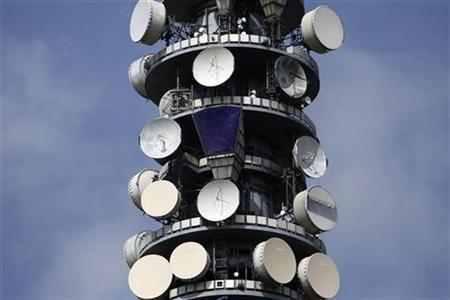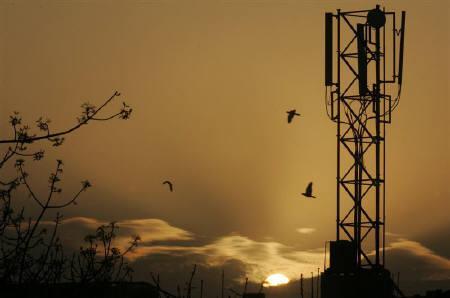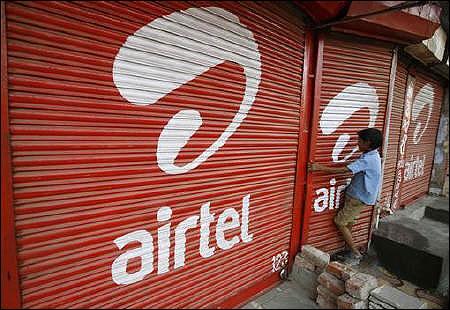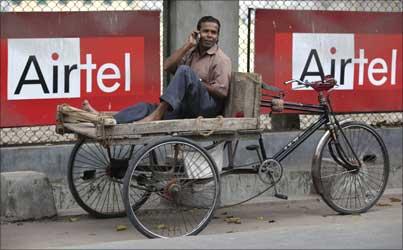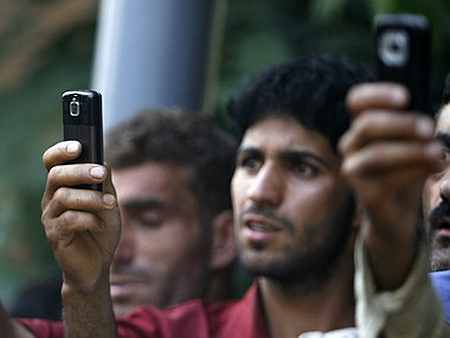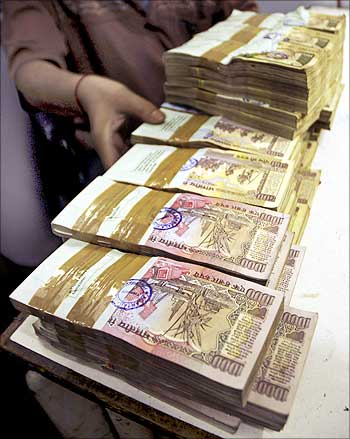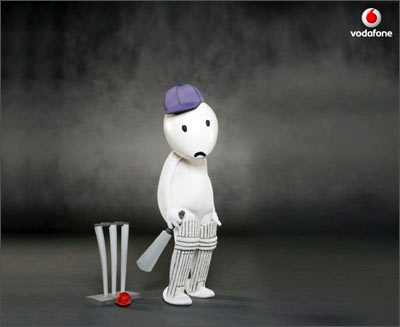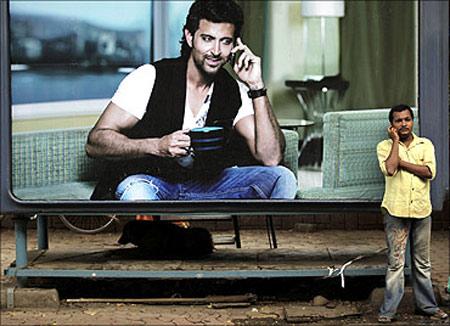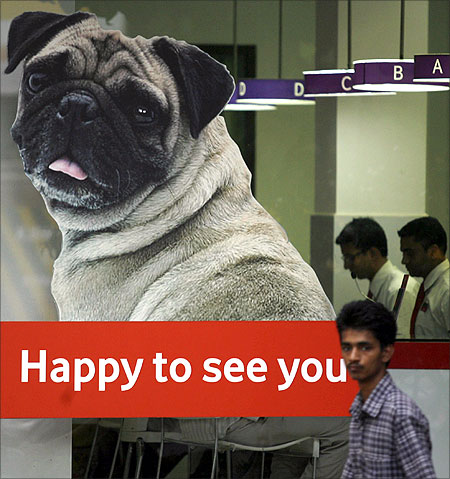 | « Back to article | Print this article |
Why now this hue and cry over spectrum pricing
Cellular operators have created the impression that the levy of one-time fee for excess spectrum is both anti-industry and anti-consumer, Aditi Roy Ghatak and Paranjoy Guha Thakurta state that this perception is completely wrong.
A set of bewildering questions are being raised by industry lobbies and a section of the media about the levy of a one-time fee for excess electromagnetic spectrum fee held by India's telecommunications companies and the refarming or reallocation of spectrum in the privileged 900 MHz (MegaHertz) band that had hitherto been "reserved" for the early entrants.
An impression has been sought to be created that these measures have suddenly come out of the blue and that these are both anti-industry and anti-consumer. Such a perception is completely misplaced. Here's why?
The fact that the biggest players in the country's telecom industry, notably the old incumbents -- including the "big three" Bharti Airtel, Vodafone and Idea, besides the public sector Bharat Sanchar Nigam Limited (BSNL) and Mahanagar Telephone Nigam Limited (MTNL) – had all managed to secure more than their authorized share of spectrum and would have to pay for it, has been in the public domain for some time now.
Click NEXT to read more...
Why now this hue and cry over spectrum pricing
In 2008, the Attorney General of India Goolam E. Vahanvati's had given his opinion that incumbent operators using GSM (global system of mobile communications) technology be charged an auction-determined fee for excess airwaves held beyond the 6.2 MHz limit on a retrospective basis from July 2008.
This is what he stated on October 17 this year: "The decision was taken in July 2008 based on my opinion. I would reiterate the same as set out in my opinion. I would like to reiterate that if a decision was taken, the fact that it was not immediately implemented for four years does make implementation from that date retrospective".
The concerned telecom companies knew very well that once the period of their licences got over, they would have bid for spectrum afresh and would have to agree to abide by the new set of conditions that would be part of the new licence regime that would come into force.
Click NEXT to read more...
Why now this hue and cry over spectrum pricing
Their economics must have been based on this understanding of the reality. Or did some telecom companies believe that nothing would change as far as pricing of spectrum is concerned?
More importantly, the big two (Airtel and Vodafone) had been recipients of a generous "gift" during fiscal 1999-2000 when the original periods of their licence agreements were extended without them having to pay a single extra rupee!
The two companies were not exactly running philanthropies. But the government's benevolence was truly extraordinary and it certainly enabled a clutch of Indian entrepreneurs and their associates in the multinational corporations to build their telecom empires.
Click NEXT to read more...
Why now this hue and cry over spectrum pricing
Bharti, an Indian company headed by Sunil Bharti Mittal, is currently the fourth largest telecom company in the world, having started from scratch less than two decades ago.
On the other hand, Vodafone is a global company and is now the second largest player in India's telecom market, followed by Idea headed by Kumaramangalam Birla.
The point simply is that the spectrum was initially given for a specific period of time. All those who signed up for spectrum knew that after their contract got over, they would have to enter into a new contract under a new dispensation without any entitlement guarantees for existing licence holders.
Click NEXT to read more...
Why now this hue and cry over spectrum pricing
Consider the case of Taj Man Singh, a five-star hotel in the heart of New Delhi, the site for which was leased out to a Tata group company for a specified period. At the end of the period, the site goes back for re-auctioning.
The whole of Hong Kong, leased to the British for 99 years, reverted to the People's Republic of China. This is not just the law; this is also common sense.
Now consider what happened to the country's telecom operators who were the first to bid successfully for licences.
Mobile telephone services started in India in November 1994 with the issuance of eight licences for Cellular Mobile Telephone Services (CMTS) in the four metropolitan cities of Delhi, Mumbai, Kolkata and Chennai to eight private companies. BPL Mobile and Hutchison Max got Mumbai, Bharti Cellular and Sterling Cellular got Delhi, Modi Telstra and Usha Martin got Kolkata while RPG Cellular and Skycell got Chennai.
Click NEXT to read more...
Why now this hue and cry over spectrum pricing
The original winners are directly or indirectly owned and/or controlled by either Bharti or Vodafone at present.
Subsequently, 34 licences for 18 telecom circles (geographical territories) were issued to 14 private companies between 1995 and 1998. Under the National Telecom Policy (NTP) 1994, bids were invited for private investments in 1995 through a competitive process to introduce an additional basic service operator in each service area.
The government decided that only one new entrant would be granted a licence in each service area for providing basic telephone service in competition with the Department of Telecommunications (DoT).
Click NEXT to read more...
Why now this hue and cry over spectrum pricing
Three rounds of tenders invited from January 1995 onwards led to the eventual signing of licence agreements for only six circles in 1997-98.
In those early days – before the Great Indian Telecom Revolution kicked in -- the successful bidders secured the efficient 900 MHz spectrum while the later day entrants were allotted spectrum in the 1,800 MHz band and were clearly at a relative disadvantage.
Today, an angry Cellular Operators Association of India, which represents the interests of the big three (Bharti, Vodafone and Idea) that were the early entrants, argues: "Spectrum refarming is tantamount to forcible disembodiment of a legitimate occupant and goes against the license terms and conditions".
Click NEXT to read more...
Why now this hue and cry over spectrum pricing
What needs to be borne in mind is that the early operators made humungous sums of money from their companies: some of it on account of their entrepreneurial spirits, the quality of their management and sheer hard work as well.
But what can also not denied is that these companies were able to rake in the moolah courtesy government largesse in the form of spectrum.
While a certain amount of spectrum was officially allotted as per contractual agreements, nearly double that quantum of spectrum was given away way back in 1994-95 by the DoT under the tutelage of the then Telecom Minister Sukh Ram who was in charge between January 18, 1993 and May 16, 1996.
Click NEXT to read more...
Why now this hue and cry over spectrum pricing
The 1994 files on spectrum allocation have apparently gone missing. In any case, no one seems to be keen on looking for them. What was allotted was a "cumulative maximum" of 4.4 MHz and 4.5 MHz spectrum for the state and the metro circles respectively; but what was actually given away was double the amount!
Questions have been asked in Parliament and letters have been sent to the Prime Minister but no one has answered the question as to why twice the spectrum allotted was gifted away.
No one seems even prepared to investigate or to try and understand what unauthorized advantage accrued to these few operators because of the free spectrum they received.
Click NEXT to read more...
Why now this hue and cry over spectrum pricing
If one takes a charitable view, even the bureaucrats in the DoT did not understand the value of the spectrum that was given away with the licence. India had not fully emerged out of the licence raj mindset.
In the absence of any response from the government to Parliamentary questions or even to applications made under the Right to Information (RTI) Act, it is fair to assume that the doubling of the allotment of spectrum was done through a response to a question seeking a clarification on the tender documents after they had been signed.
Those who signed the licence agreement, signed for a cumulative maximum of 4.4 MHz of spectrum.
Click NEXT to read more...
Why now this hue and cry over spectrum pricing
However, subsequent to a clarificatory question, the government responded that vis-a-vis "tender documents for provision of telephone service No. 314-7/94-PHC" under the head "replies to queries received in terms of Clause 4 of section II, Part I "(not clause 20 under which the cumulative maximum was specified) that was dealing with the calculation of licence fee, the words meant "for a cumulative total of 4.4 MHz + 4.4 MHz assigned to an operator for GSM standard mobile cellular system..."
The calculations are shown in Document one.
On hindsight, it would seem that someone was trying to obfuscate issues because today the phrase "cumulative maximum" has been substituted by the phrase "4.4 MHz (paired)" presumably in a bid pass off the malfeasance under a changed technical phraseology.
Click NEXT to read more...
Why now this hue and cry over spectrum pricing
Some senior bureaucrats, technocrats and industry experts insist that the preoccupation with the phrase "cumulative maximum" is unnecessary since spectrum is always paired. But the point being made here is that the two words "cumulative maximum" meant a pair and not twice the amount of spectrum as was written in the licence agreement.
Then, of course, even more spectrum was given away. One has not been able to locate the file (if it does exist).
In his deposition before the Joint Parliamentary Committee, the former Telecom Secretary, Shyamal Ghosh, said that it was a "practice" to allocate additional spectrum since 1996; that the DoT had decided that additional spectrum up to 6.2 MHz could be given "based on justification" -- whatever that means.
Click NEXT to read more...
Why now this hue and cry over spectrum pricing
The Justice Shivraj V. Patil report, prepared by the former judge of the Supreme Court, who enquired into the appropriateness of procedures followed by the DoT while issuing licences and allocation of spectrum between 2001 and 2009, confirms under paragraph 2.84 that "each cellular operator was allotted start-up spectrum of up to 4.4 MHz + 4.4 MHz at the initial stage depending on the requirements at various places.
Conditions of the licence agreement between DoT and service providers stipulated that a cumulative maximum of 4.4 MHz + 4.4 MHz in the 900 MHz band".
Justice Patil was not correct but he accepted what was stated by the government. Importantly, he was not required to go into what had transpired prior to 2000. What had actually happened was that by breaking the "cumulative maximum" barrier the government gifted more than 35 MHz around 1994-95 (4.4 MHz extra for each operator in each circle or 8.8 MHz per circle multiplied by four circles).
Click NEXT to read more...
Why now this hue and cry over spectrum pricing
More gifts were to be given to the original entrants. The bidders for the state circles were in trouble. They had paid too much for their licences but, with Jagmohan as the Telecom Minister under the NDA regime, there was no respite.
So he had to go; a new telecom policy was in place by 1999 (NTP 99) that permitted licencees to migrate from a fixed licensee fee regime to a revenue share arrangement with effect from August 1, 1999. Besides, it provided for licences to be awarded for an initial period of twenty years to be extendable by additional periods of ten years thereafter.
It can be argued that state circle operators did indeed need help. But, suddenly, under the guise of helping everyone, the government not only allowed the circle operators to migrate to the revenue sharing model but also extended the licence period from ten years to twenty free of cost.
Click NEXT to read more...
Why now this hue and cry over spectrum pricing
Worse, it extended this advantage to the metro operators, who were doing quite well for themselves. All this was under the NDA regime of Prime Minister Atal Behari Vajpayee.
The Telecom Regulatory Authority of India (Trai) admits to the giving away of concessions to the initial operators in a report on "Spectrum Management and Licensing Framework" submitted on May 11, 2010.
On migration of the licences from a fixed licence fee regime to a revenue sharing regime, the revenue share was provisionally fixed as 15 per cent of the adjusted gross revenue (AGR) subject to review by the Trai and was reduced to 12 per cent, 10 per cent and eight per cent respectively for the metros and 'A', 'B' and 'C' category circles, when the basic service operators (or BSOs) were permitted to provide limited mobility from January 25, 2001.
Click NEXT to read more...
Why now this hue and cry over spectrum pricing
The licence fee was further reduced to 10 per cent, eight per cent and six per cent of the AGR for the metros and categories 'A', 'B' and 'C' service areas from April 1, 2004.
Even better, the old cellular licensees (first and second CMTS licensees) were given additional concession of two per cent in the licence fee for four years.
Finally, one can hardly forget the minuscule sums that were charged by way of licence fee those days (See Chart: What the first winners agreed to pay).
Even those rates were revised to give the operators a bonanza.
